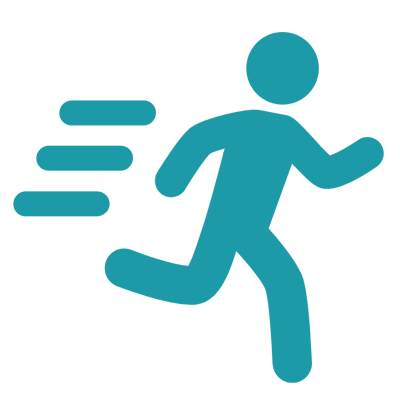If you are experiencing domestic violence, it’s not your fault. You don’t deserve to be abused—there is help.
What is Domestic Violence?
Domestic Violence is a Control
Domestic violence is a pattern of behavior in which one person dominates and controls another. This usually occurs between intimate partners. The domination and control are shown through physical, psychological, emotional, verbal, sexual, and/or economic abuse.
Many imagine only physical violence when they picture “abuse,” but Domestic Violence can be much more than physical abuse. It often includes many types of controlling behaviors.

What Are the Types of Abuse?
Hitting or slapping; kicking; choking; pushing; punching.
Constant criticism and/or mocking; humiliating remarks; yelling; swearing or name-calling; interrupting.
Forcing you to have sex; demanding sexual acts; taking sexual pictures without consent; forcing you to get pregnant; refusing to let you get pregnant.
Making it hard to see friends and relatives; monitoring phone calls; reading mail, texts, or messages; controlling daily activities; taking car keys; destroying passports or documents
Causing guilt; sulking; manipulating children and family members; always insisting on being right; making up impossible “rules.”
Watching or following; repeated threatening calls or unwanted messages; monitoring your social networking; posting unwanted photos or videos of you online; sending unwanted gifts; breaking into your home; destroying your property; using cameras in your home or spyware on your computer or phone.
Watching or following; repeated threatening calls or unwanted messages; monitoring your social networking; posting unwanted photos or videos of you online; sending unwanted gifts; breaking into your home; destroying your property; using cameras in your home or spyware on your computer or phone.
Not paying bills; refusing to give money; not allowing you to go to school or work; not allowing you to learn a new job skill; refusing to work and support the family.
Lying; breaking promises; withholding important information; being unfaithful; jealousy; not sharing domestic responsibilities.
Threats to harm children or other family members, friends, or co-workers; threats to harm pets; using physical size to intimidate; shouting; keeping weapons and threatening to use them.
Not expressing feelings; not giving compliments; not paying attention; not respecting feelings, rights, opinions, and concerns.
Breaking furniture; punching walls; throwing or breaking things.
Abusing drugs or alcohol; threatening self-harm or suicide; driving recklessly or drunk.
Who Are the Victims?
Anyone can be a victim.
Studies have found no unique link between personality type and experiencing domestic violence. Changing how the person experiencing domestic violence behaves cannot stop the abuse. Domestic violence can affect more than just the primary person experiencing it. Everyone deserves to be safe from domestic violence.
Women
- Women are at high risk for being seriously injured or killed by a partner.
- Pregnant and postpartum women are especially at risk.
- Teen girls and young women are at high risk for dating violence.
Children
- They may be abused themselves.
- They may see their parent being abused.
- The abuser may threaten to harm the children.
- They grow up seeing abuse as normal.
Teens and Young Adults
- Teenagers are just as vulnerable to relationship violence, and it is just as dangerous.
- Teenagers may not seek help because they distrust adults.
People in LGBTQ+ relationships
- People in LGBTQ+ relationships experience domestic violence at about the same rates as straight women.
- People in LGBTQ+ relationships may not seek help because they don’t believe that help is available or because they fear discrimination.
Older adults and people with disabilities
- They may be abused by their spouses or partners, adult children, or caretakers.
- They may be physically unable to defend themselves or escape from the abuse.
- They may be physically or mentally unable to report the abuse to anyone.
- Men and women who have disabilities are at high risk for abuse.
Men
- While a large majority of domestic violence victims are women, men can also be abused.
- Abusers of men may be of any gender.
- Men are very unlikely to come forward because of the stigma of being labeled weak.
Who Are the Abusers?
Abusers are not “out of control.”
- Abusers choose how to respond to a situation. They decide to behave in a violent manner.
- They are not acting purely out of anger.
- They are not only reacting to stress.
- They are not helplessly under the control of drugs and alcohol.
Abuse is learned.
- It is not “natural.”
- It is not “normal.”
- It is may be a part of a cycle coming from the home where the abuser grew up.
Abusers may:
- Be anyone, of any age, gender, orientation, economic class, or background.
- Say they are sorry and act loving.
- Be hard workers and good providers.
- Be witty, charming, attractive, and intelligent.
- Be loving parents sometimes.
Impact of Domestic Violence
Trauma Response
Domestic violence is often traumatizing. The word “trauma” is used to describe painful or disrupting experiences that overwhelm someone’s ability to deal with certain situations or everyday life. Survivors of domestic violence may have a trauma reaction, which includes three instinctive responses that happen without thought. These responses occur both during the abuse and afterwards.

Fight
Attempting to respond with violence of some sort; can leave victim feeling angry.

Flight
Trying to leave the situation; results in feelings of anxiety and worry.

Freeze
Inability to move or even speak in some cases; leaves lingering feels of an inability to take action.
Trauma is Individual
A survivor may experience any or all of these in any order. These responses may also repeat. All of these reactions to trauma are normal, common, and understandable. Something bad and scary happened to you. REMEMBER: You did not cause this to happen.
The video linked below explains why people have these different responses.
Power and Control Wheels & Equity Wheel
Violence is a Pattern
The Power and Control Wheel links the different behaviors that combine to form a pattern of violence. It shows how each behavior is an important part of the overall effort to control someone. All forms of abuse, including emotional and verbal, are serious and harmful. Survivors may experience one or more forms of abuse.
You can view an illustration of the Power and Control Wheel via the National Domestic Hotline’s website, linked below. They also include versions of this wheel explored through the lens of immigration status and LGBTQ+ orientation.
What Is Healthy Behavior?
The Equality Wheel offers a view of a healthy relationship that is based on equality and nonviolence. Use this chart to compare the characteristics of a non-violent relationship to those of an abusive relationship in the Power and Control Wheel.
You can view the Equality Wheel from the National Center on Domestic and Sexual Violence via the link below.
